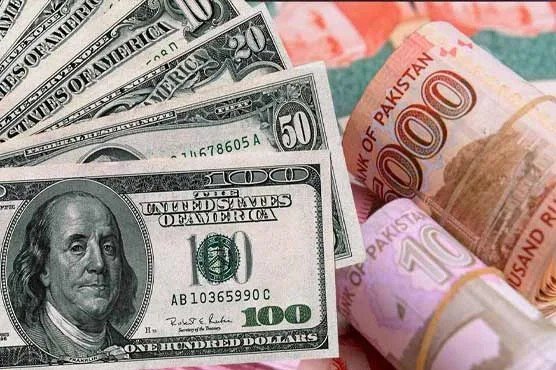
The State Bank of Pakistan (SBP), the country’s central bank, has announced a significant change in the way it manages its monetary policy—particularly concerning the frequency of interest rate reviews. Previously, the State Bank of Pakistan Monetary Policy Committee reviewed and set the benchmark interest rates roughly every 45 days (about one and a half months). However, under the new directive, the central bank will now conduct these assessments every six months. This shift marks a considerable adjustment in the monetary policy framework aimed at bringing more stability and predictability to Pakistan’s financial landscape.
Background: Interest Rate Reviews and Monetary Policy
Interest rates are a critical tool used by central banks worldwide to regulate economic activity, control inflation, and influence growth. By raising or lowering the benchmark interest rate, central banks affect borrowing costs for consumers and businesses. This, in turn, impacts spending, investment, and overall economic momentum. The Monetary Policy Committee (MPC) of the SBP traditionally meets several times a year to review current economic indicators—including inflation, GDP growth, currency stability, and global economic conditions—to decide whether to adjust the policy rate.
Pakistan, like many emerging economies, faces challenges such as inflation volatility, fiscal deficits, and exchange rate fluctuations. These factors make monetary policy a delicate balancing act. Historically, the SBP has reviewed rates every 45 days to respond quickly to changing economic conditions. However, such frequent reviews sometimes led to volatility in financial markets, as businesses and investors struggled to anticipate policy changes.
The New Approach: Six-Month Review Cycle
The decision to move from a 45-day review cycle to a six-month interval for setting interest rates is designed to provide a more stable and predictable economic environment. This longer duration between rate reviews means the MPC will take a broader, more long-term view of the economic conditions before making policy changes.
By adopting a six-month review cycle, the SBP aims to:
-
Enhance Policy Predictability: Longer intervals allow businesses, investors, and consumers to plan with greater certainty, reducing market speculation and reactionary behaviour based on frequent rate changes.
-
Reduce Volatility: Less frequent rate adjustments can help calm short-term market fluctuations, especially in foreign exchange and stock markets, which are sensitive to monetary policy signals.
-
Focus on Medium-Term Economic Goals: A longer review cycle encourages policymakers to consider structural reforms and sustainable growth rather than quick fixes.
-
Improve Credibility and Communication: With more time between reviews, the SBP can better communicate its policy stance and rationale to the public, increasing transparency and trust in its decisions.
Potential Benefits and Challenges
This strategic change has multiple potential benefits. Investors and entrepreneurs often favor stable interest rate environments because it reduces uncertainty in financing costs. Similarly, exporters and importers can better manage currency risk when they anticipate less frequent monetary policy shifts.
On the inflation front, a stable interest rate policy can anchor inflation expectations, helping businesses and households make informed decisions regarding pricing and wages. The six-month cycle also aligns Pakistan’s monetary policy with some global practices, where central banks do not necessarily meet as frequently unless emergency economic conditions arise.
However, this approach is not without challenges. The global economy is volatile, and unforeseen events — such as commodity price shocks, geopolitical tensions, or domestic economic disruptions — may require the SBP to act faster than the scheduled six-month interval. In such cases, the central bank may need to convene emergency meetings or communicate interim policy measures.
Furthermore, the longer interval means that if the policy rate is set incorrectly, the economy may experience extended periods of suboptimal borrowing costs, either too high or too low, before adjustments are made. This underscores the importance of accurate forecasting and comprehensive economic analysis by the SBP.
The State Bank’s Role in Pakistan’s Economy
As Pakistan navigates economic challenges like inflation, fiscal pressures, and external account deficits, the SBP’s role becomes increasingly vital. The shift to a six-month review period reflects a maturing monetary policy framework that prioritizes stability and strategic planning over short-term reactionism.
The SBP’s monetary policy committee will continue to monitor economic indicators closely, including inflation rates, GDP growth, fiscal policy, and external sector dynamics. The move toward semi-annual reviews also encourages more robust data collection and analysis to ensure that policy decisions are grounded in comprehensive economic realities.
Conclusion
The State Bank of Pakistan’s decision to determine interest rates every six months, replacing the previous 45-day review cycle, signals a new phase in the country’s monetary policy approach. This adjustment aims to foster a more stable and predictable economic environment, benefiting businesses, consumers, and investors alike. While it introduces some risks due to less frequent adjustments, the overall intent is to focus on medium-term economic health and reduce market volatility.
As Pakistan’s economy continues to face internal and external pressures, this strategic shift in policy review frequency may help anchor inflation expectations, support sustainable growth, and enhance the credibility of the State Bank of Pakistan. Observers and market participants will keenly watch how this change impacts Pakistan’s financial markets and broader economic performance in the coming years.
Reference: اب ڈیڑھ ماہ کے بجائے ہر چھ ماہ بعد شرح سود کا تعین کیا جائے گا:اسٹیٹ بینک


